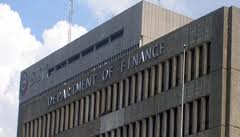Breaking
DOF chief explains government’s debt management program
MANILA – Finance Secretary Cesar Purisima decried allegations made by the Freedom from Debt Coalition (FDC), which claimed that President Benigno Aquino III has become the biggest loan addict among Philippine presidents.
The current Aquino administration has been very active in the international capital market as part of its liability management program, enabling it to lengthen debt maturities at lower cost.
Just on February 18, 2016 alone, the government issued US$ 2 billion worth of 25-year US dollar-denominated global bond, the longest tenor and the first for an Asian country this year with a rate of 3.70 percent, the lowest coupon ever issued by the country to date.
The US$ 1.5 billion of the proceeds of the bond sale will be used to pay existing bonds that were offered by investors for buy-back while the balance will be used for the government’s budgetary purposes.
FDC alleged that President Aquino will leave his succesor with a PhP6.4 billion of national government debt, with PhP4.16 trillion taken during his term.
This also translates to a PhP62,235.26 debt for each of the 103 million Filipinos, plus PhP4,251 in government-guaranteed liabilities.
However, Purisima pointed out that “using nominal figures to talk about debt is as misguided as it is disingenuously detrimental to the quality of public discourse on public finance.”
He said the focus when talking about debt is sustainability “or the ability to pay back the borrowed money.”
“Thus, the important measurement is debt as a percentage of GDP (gross domestic product),” he stressed.
“During the Aquino administration, fiscal consolidation has led to a well-managed deficit which eased financing requirements, translating to lower growth in national government liabilities compared with the size of the economy,” he said.
As of end-2015, the Finance chief said the country posted a debt: GDP ratio of 44.8 percent, the lowest since 1996 or the time where there is comparable date.
“In fact, for the first time since the early 80s, the debt-to-GDP ratio fell below 50.0 percent in 2013 – a far cry from the year 2004, when the ratio was at a high of 74.4 percent,” he said.
Comparing these figures with that of other countries, Purisima said debt: GDP ratio of the US stood at 96.1 percent in 2013, 196 percent for Japan in 2012 and 55.1 percent as of 2012 for Germany.
Purisima said that if the country’s liabilities include those of social security institutions and local government units (LGUs), proporation of the liabilities of the general government to the country’s total output would be 36.4 percent in 2014, lower compared to the 44.3 percent in 2009 and and lowest since earliest comparable data in 1998.
Including liabilities of government-owned and controlled corporations (GOCCs) and government financial institutions (GFIs), the Outstanding Public Sector Debt as of end-September 2015 stood at 55.8 percent, the lowest since the earliest comparable period or in 1998.
“This is a 15.1 percentage point improvement from the 70.9 percent posted in 2009, and is worlds apart from when it was at its peak in 2003, at 111.6 percent,” Purisima said.
With the government’s active liability management program, the Finance chief said proportion of interest payments to expensitures fell to 14.5 percent in the first 11 months of 2015 as against the 19.3 percent in 2009.
“These savings imply that we have more fiscal room to spend on more productive investments in our land and people, such as infrastructure, health, education, and social services expenditures,” he said.
The Finance chief also stressed that concept of debt is different for a government and corporations compared to an individual person citing the need for the former to maintain “a healthy level of debt not only to help develop the capital markets, but to finance future growth.”
He said both the private and public sectors fund operations through revenues earned or through borrowings including issuane of securities like bonds.
He said the government’s budget is not only being utilized for current programs but future programs and potential growth of the economy.
“Relying solely on the current level of revenue generation to finance the budget creates a dangerous restraint to growth, is uncommon (there are only five countries in the world without debt), and ultimately unwise for most.
This provides the impetus for maintaining a sustainable,” he said.
Purisima said the “government is fully committed to our proactive liability management strategy to fund the Republic in the most cost-effective way possible.”
He added that the government’s debt management program is also being strengthened to better address risks from its debt portfolio.






















